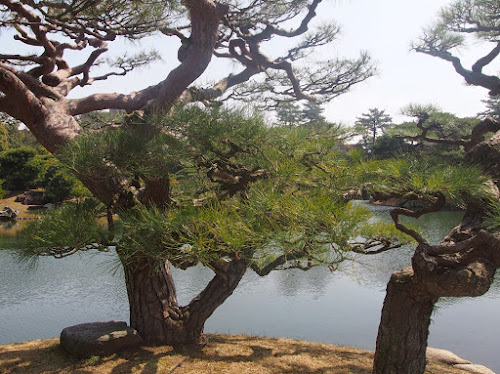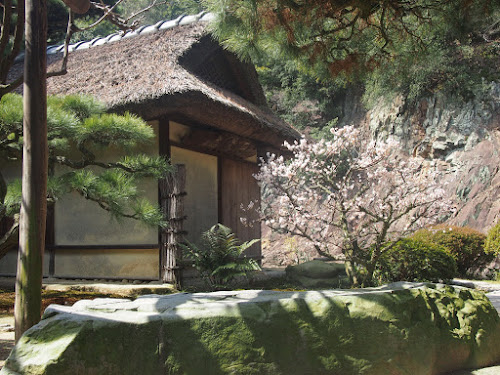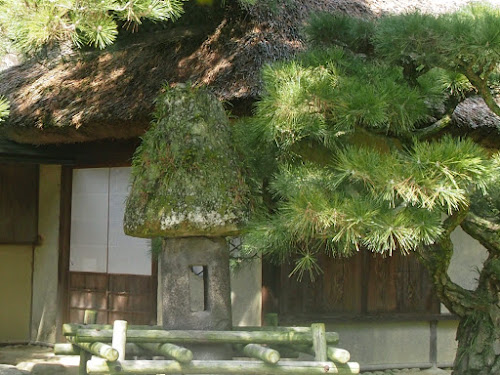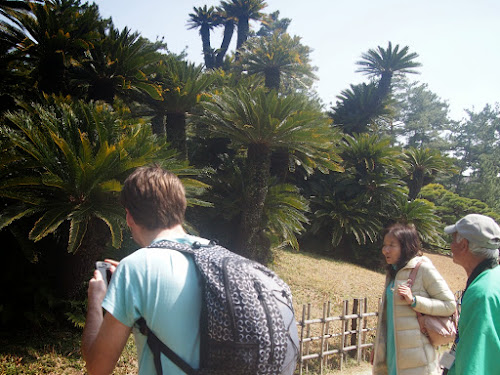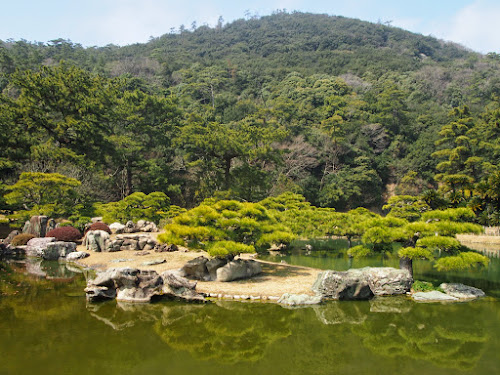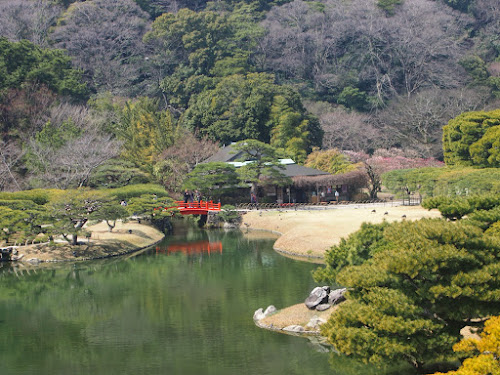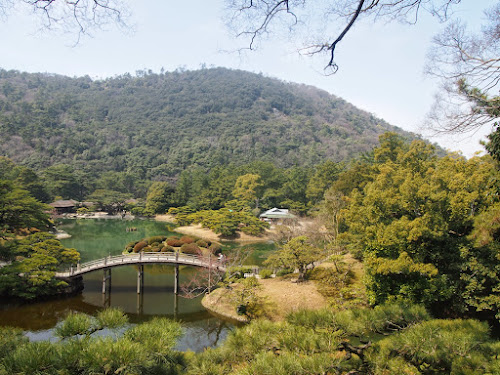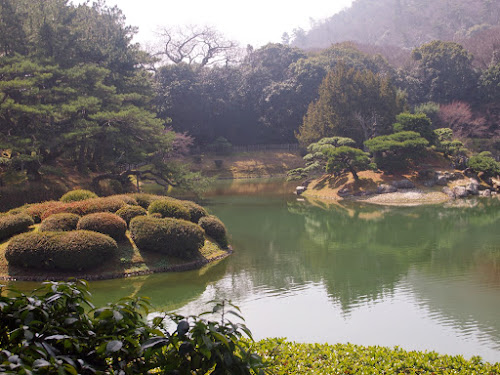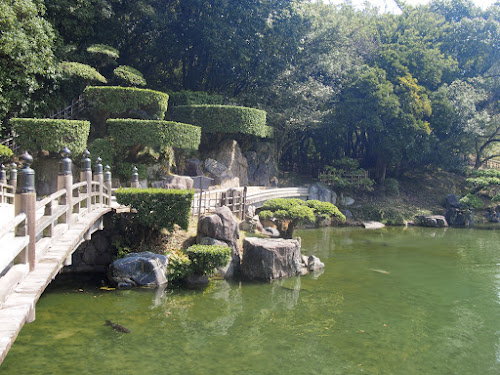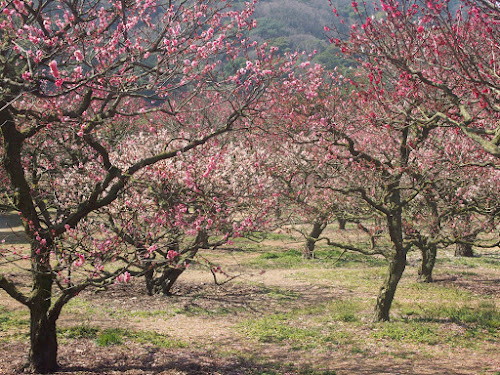This morning we walked through the fog past trucks lined up ready to load onto the ferry and through crowds of people to the ticket counter to purchase our tickets for Naoshima, the art island. We shouldn’t have been surprised at the news. “Our” boat was still at Naoshima and none of the ferries were going anywhere until after the fog lifted. So, we formulated Plan B, hoping for a decent sailing day tomorrow. We made for Ritsurin Garden.
The first stage of the gardens was constructed as a “strolling garden” in the 1620s by the feudal lord or “daimyo” of Takamatsu Domain. It was expanded over the next hundred years and then served as the Matsudaira family residence until the 1870s when it was opened to the public.
The black pines are especially magnificent and ancient. When we asked our volunteer guide about this one, he thought it was probably about 300 years old.
The crane and tortoise pine has been cultivated over hundreds of years with 110 rocks to (if the photo were better) suggest a crane spreading its wings on the back of a tortoise, both symbols of long life. It’s the most prized tree in the garden and is carefully shaped by the head gardener twice a year. A job that takes him two weeks, while other trees command a gardener’s attention for 3 or 4 days.
Another prized specimen is this oak tree that grew up in the decaying trunk of a pine so that when the pine tree finally sloughed away the now-exposed root structure became the trunk of the oak.
The tree on the left is known as the copper tree, being a graft of a black pine (man tree) on the right and a red pine (woman tree) on the left. The needles of a black pine are considerably tougher than those of the red pine, although that has nothing to do with the toughness of the plant, as the red pine has thrived much more in this pairing. Our guide had a good laugh.
Rocks feature prominently in the garden and are highly valued. Some were extravagant gifts to the daimyo. One that was not in a very photogenic setting was brought all the way from Korea and was huge.
An artificial waterfall was constructed opposite one of the tea houses so that guests might enjoy the pleasant sound.
These trees were brought from Okinawa, but grow much larger in Takamatsu because they keep being ravaged by typhoons on Okinawa.
A potted bonsai tree when given as a gift in 1833.








